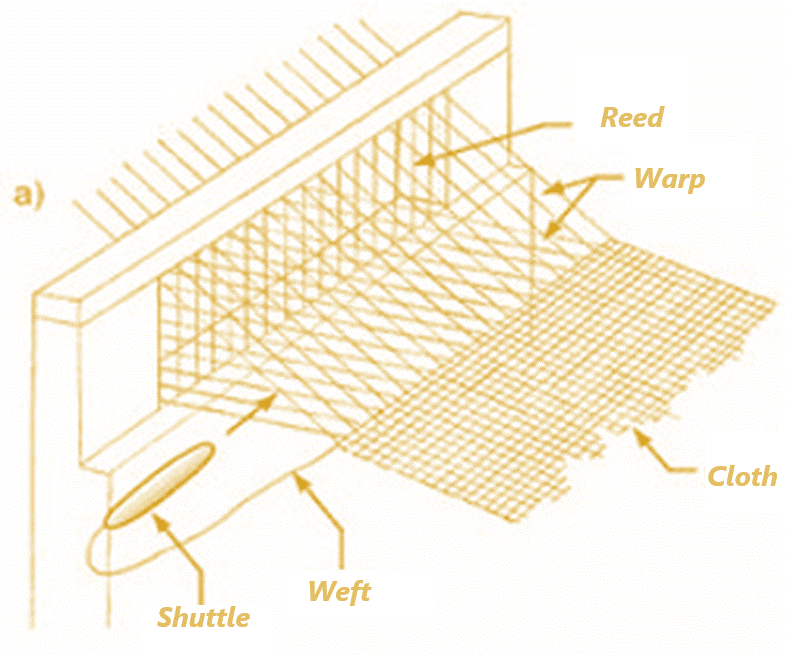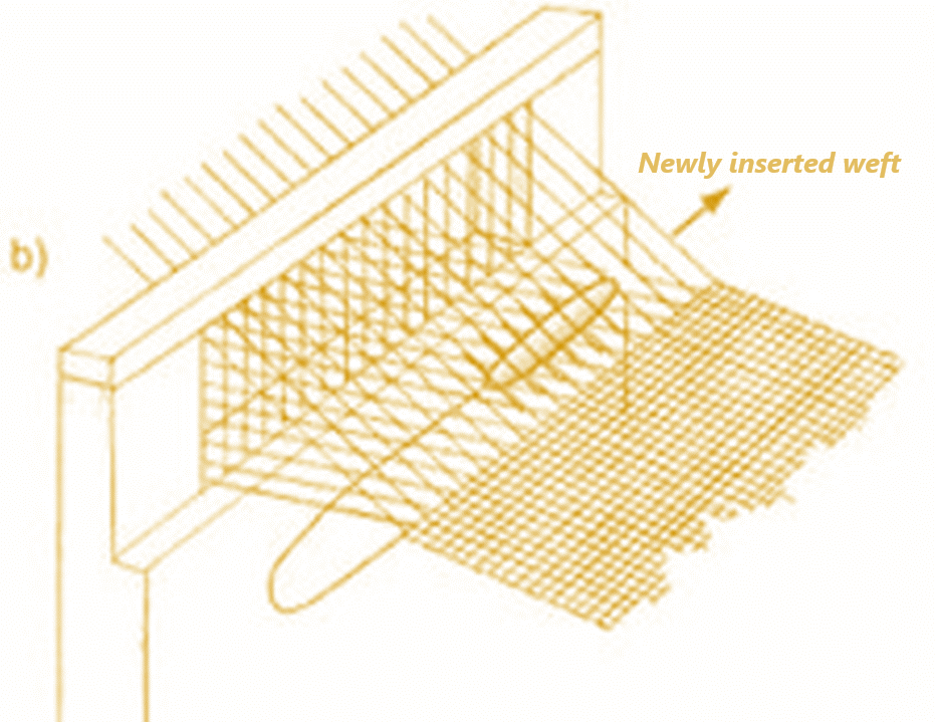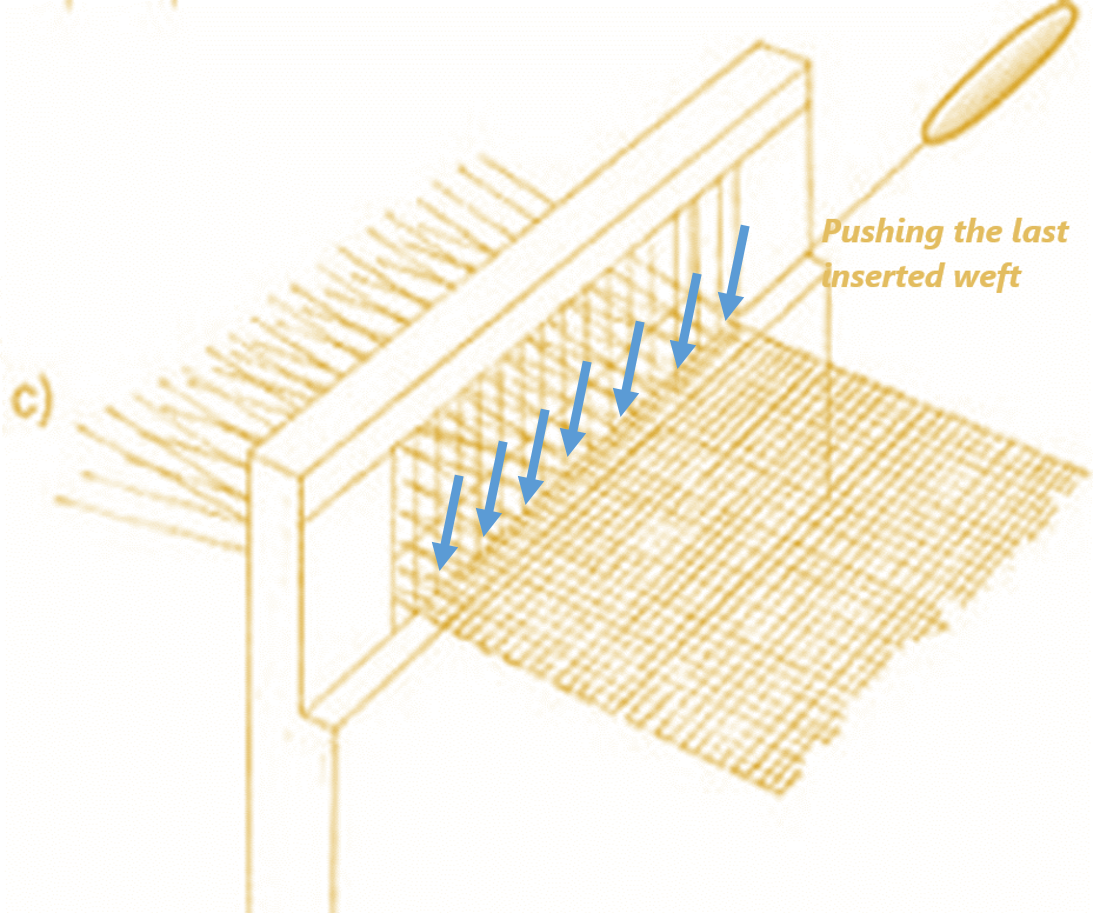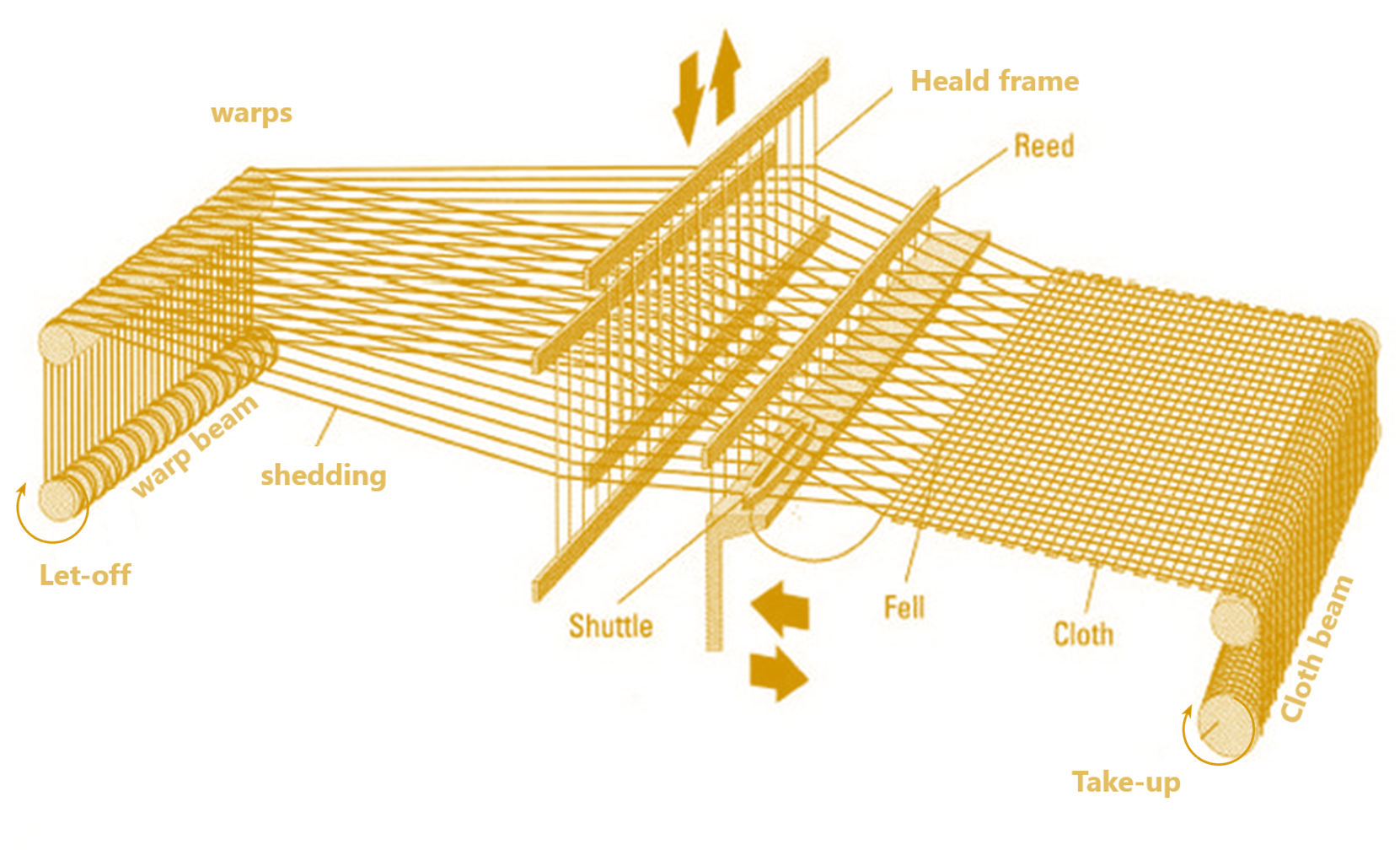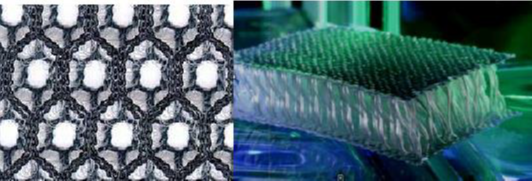Loom is a device used to produce fabrics from interlacing two sets of yarn named warp and weft yarns. The sectional view of a plain loom has been given below to have an idea about loom structure. Material flows in a weaving loom has also been outlined below.
Flows of material in a weaving loom:
Weaving Process: There are five fundamental operations necessary to produce fabrics from a loom and these operations are called weaving motion or loom motion.
(1) Shedding,
(2) Picking,
(3) Beating-up,
(4) Let-off and
(5) Take up.
1. Shedding: The process of separating the warp yarns into two layers by raising and lowering the shafts, to form a tunnel known as the ‘shed’.
2. Picking or Filling: The process of passing the weft yarn (pick) across the warp threads or inserting the weft fills through the warp tunnel created by shedding.
3. Beating-up: Pushing the newly inserted weft yarn back into the fell cloth and it is done by using the reed.
4. Let off: The process of releasing the warp yarns from the warp beam during the above three processes.
5. Take up: The process of taking or winding the cloths on the cloth beam during the first three processes.
Texpedi.com
Check out these related articles:



